When and where
,stadtprojektionen III‘ took place from April 18 to 21, 2019, starting at 8 p.m., in the Lachen and St.Otmar districts in St.Gallen.
,stadtprojektionen III‘ took place from April 18 to 21, 2019, starting at 8 p.m., in the Lachen and St.Otmar districts in St.Gallen.
Shisha bars, shrill festive dresses, baba ganoush, rosewater, and pastel de nata—people on a search for them in St.Gallen must go to the Lachen district. The multicultural district northwest of the train station is the venue for ,stadtprojektionen III.‘ Works will be projected on a former soap factory with warehouse, a heavily frequented carwash, and the unfinished sides of housing blocks and firewalls. They are located to the south of Zürcherstrasse, which divides the district in two. To the north of this lively main axis, ,stadtprojektionen III‘ lures visitors into a residential area laid out like a chessboard, with multifamily buildings from the time around 1900. There are additional visual interventions to be discovered in the center of the district: the building complex around the post office was erected in the 1930–50s and today accommodates a colorful and at times rapidly changing mix of shops and bars. When strolling through the district, one can grab a kebab in Lachen, a bratwurst at the stand next to the Denner grocery store, a piece of baklava at Habibi, or a pastel de nata at the Portuguese bakery, and, besides the projections, also discover an empty lot managed by children, family gardens, or spacious parks.
Within the framework of ,stadtprojektionen III,‘ there were two tours. The opening took place at Restaurant Gampi. In the run-up, Anna Vetsch and Nina Keel discussed light phenomena in urban space with art historian Edgar Heilig, who co-designed the urban light concept of St.Gallen in 2008, and the architecture historian Bernadette Fülscher. The conversation took place at the Architektur Forum Ostschweiz.
,stadtprojektionen III‘ presented the works of 14 artists who work in the mediums of film and photography.
,Bahama Beige‘, 2019
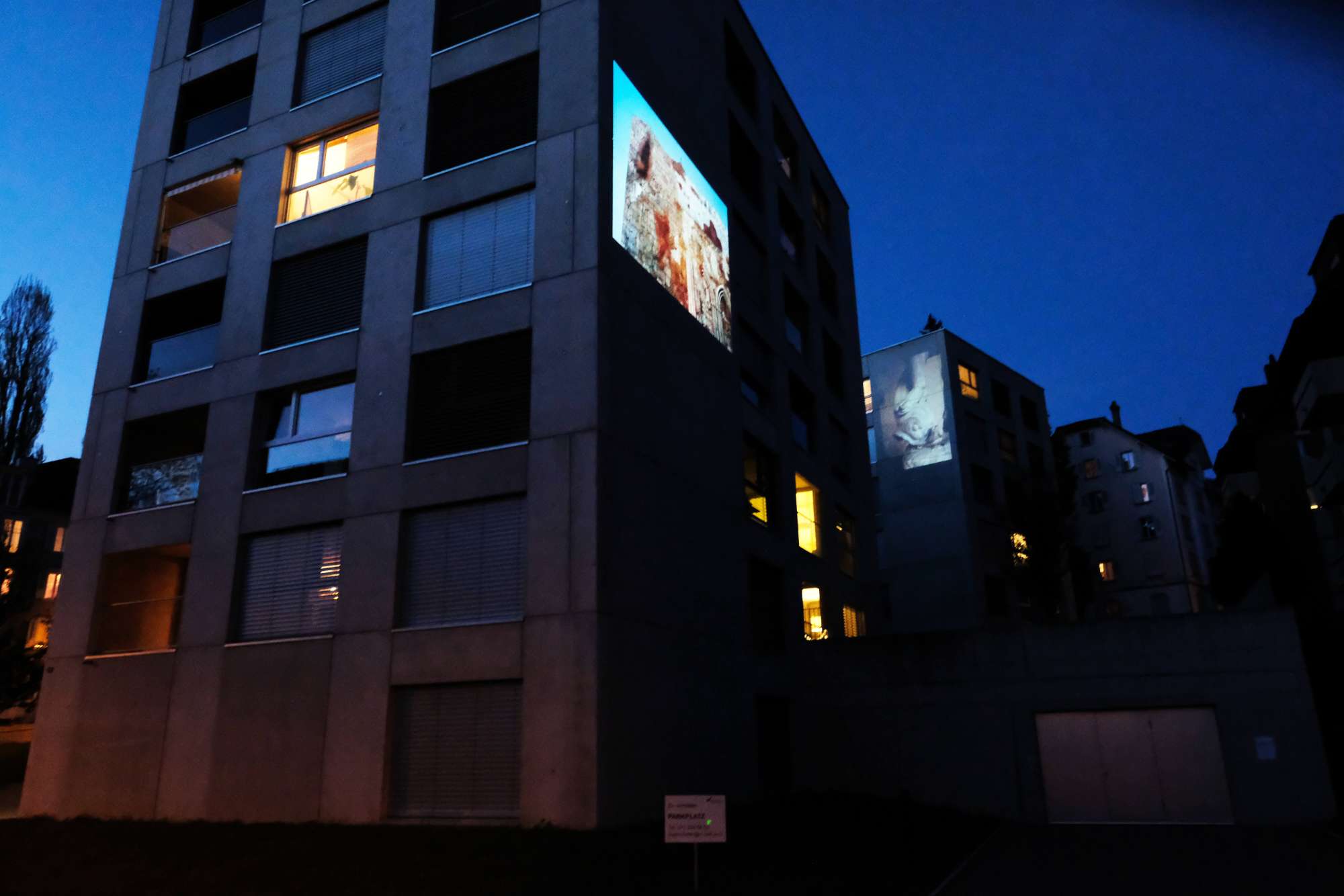
,Bahama Beige‘, 2019
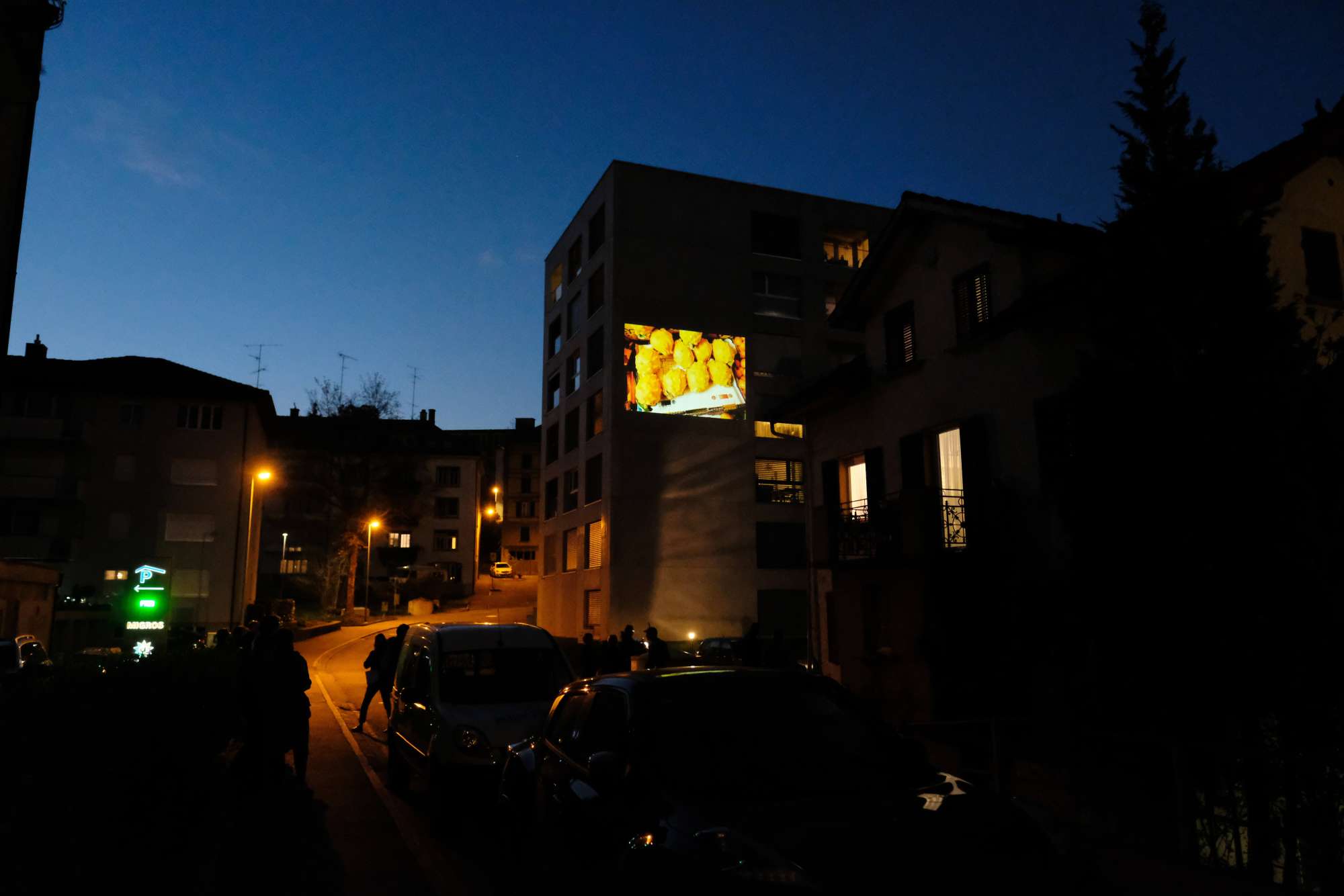
‚Bahama Beige’ by Conradin Frei is projected within eyeshot of the Restaurant Gampi, a venue with an original 1950s elegance, where ‚stadtprojektionen III’ also celebrates its opening. Two projections, one in portrait and one in landscape format, can be seen on two exposed concrete façades of a housing development consisting of four cubic structures: as a result of different rhythms, one is scarcely confronted with the same combination of pictures a second time.
The collection of snapshots from Southern Europe, in which place and time are cancelled out, has been growing since 2014: whether house entrances, kiwanos, squid tentacles, or (imitated) marble sculpture—any localization is made impossible for viewers and any narrative is excluded. Frei instead focuses attention on the respective subject, focuses on details or sections. The examination of light in a subtle interplay with color, architecture, and situation views thus stands in the foreground of Frei’s artistic practice.

,Komposition-37-2011‘, 2011
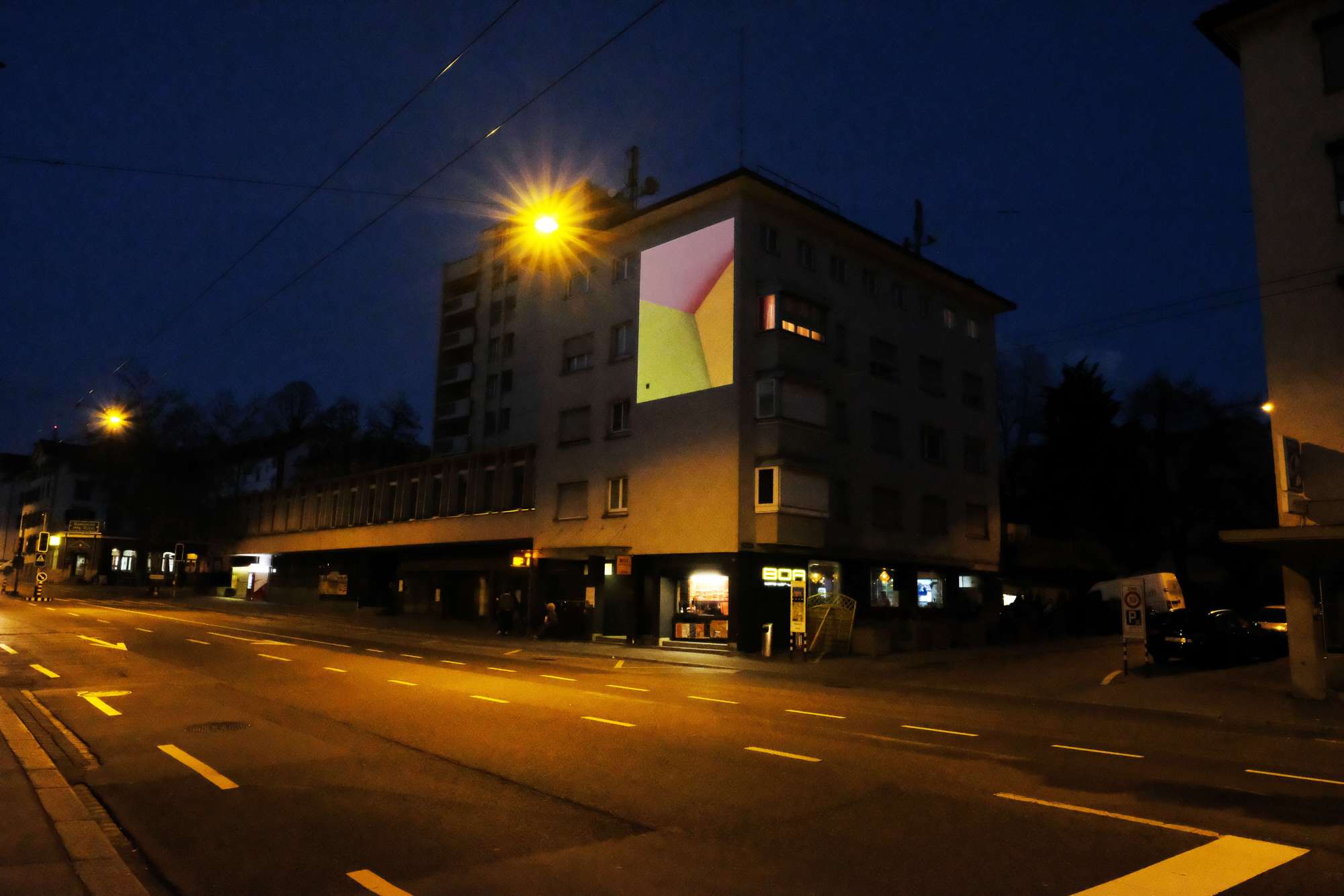
Shirana Shahbazi is showing an abstract photograph at Zürcherstrasse 29. The work is titled ‚Komposition-37-2011’ and was created in the artist’s studio by combining geometric color surfaces and pigments. The juxtaposed pink, honey-yellow, and light green color surfaces engage in a dynamic disorientation of spatiality. Shahbazi comprehends seeing as an experience characterized by culture and the social: photographic products are thus not a reflection of reality, but instead constructions of it. This conception permeates the entire oeuvre of the artist, who primarily works with the genres of landscape, portrait, and still life.
Abstraction or formal reduction is also what connects Shahbazi’s ‚Komposition-37-2011’ and the former post building at Zürcherstrasse 29, on which the work is projected within the framework of ‚stadtprojektionen III‘: the light blue residential and commercial building erected in 1937 is a representative of Neues Bauen (New Building). This stylistic term for the modernity in the architecture of the 1920s and 30s makes reference to its simplified, functional design vocabulary. In the case of the former post office in Lachen, it is shown in the round windows, the unornamented façade, and the flat roof.
,Landing Strip‘, 2019, 5 min 19 sec
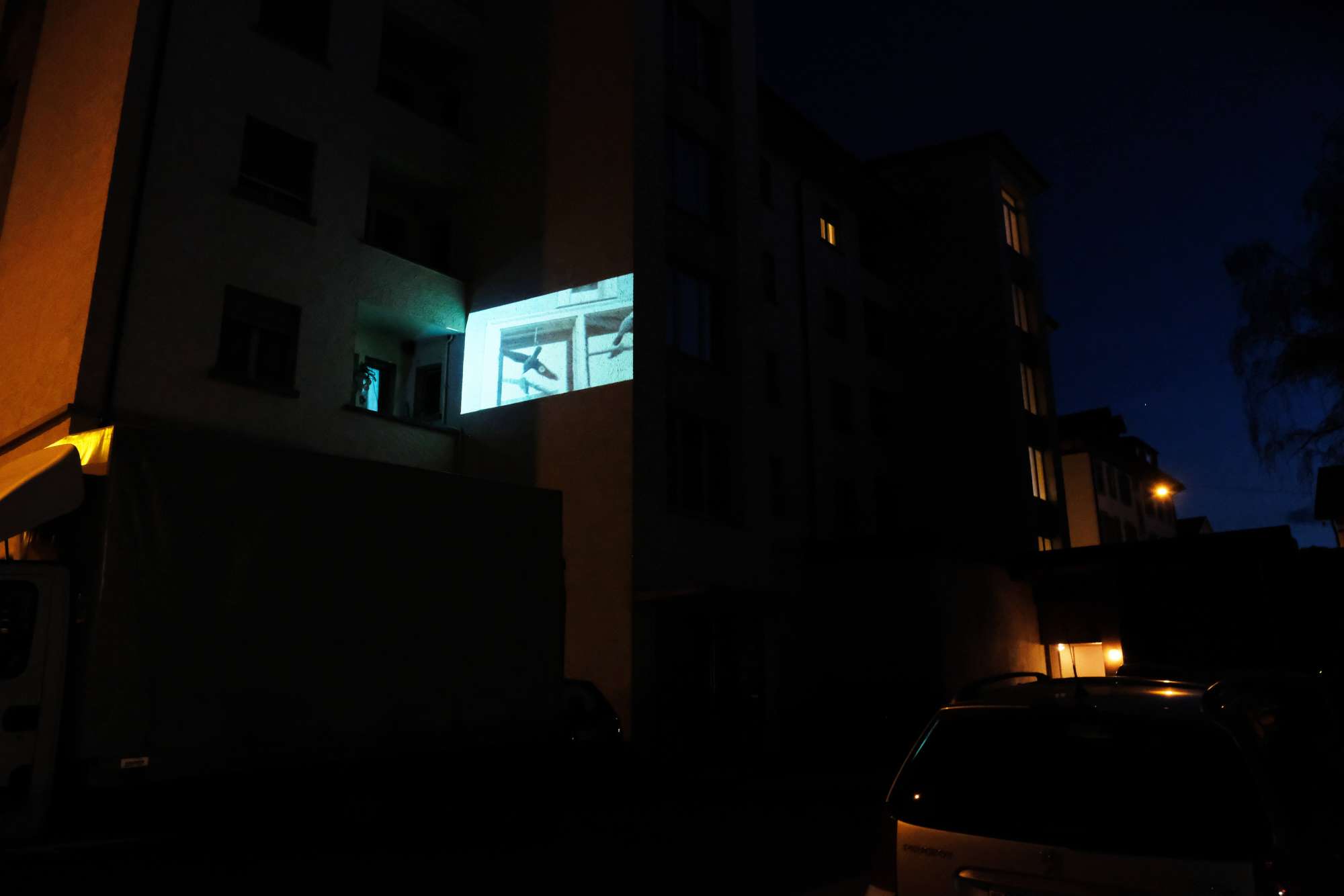
Felix Bächli observes and collects, just as also on that spring day in St.Gallen when the film material for ‚Landing Strip‘ was shot. The film is named after a former jeans shop on Poststrasse. Bächli captures everyday occurrences in city life with a VHS-C video camera and attempts to create a portrait of a society. With his look through the lens, incidental details and things that are supposedly a matter of course appear both bizarre and beautiful. The question that thus arises is whether this portrait, which seems very poetic, is thanks to the attentiveness of the artist or whether these atmospheres also existed otherwise.
Just such day-to-day scenarios might also have taken place at the projection location: Zürcherstrasse 29 housed the local Migros supermarket until February 2019 and was a central meeting point in the district. How the vacant space that has ensued will be utilized will be shown in the months following the third edition of ‚stadtprojektionen.‘
,Verwandelt‘, 1998-2018
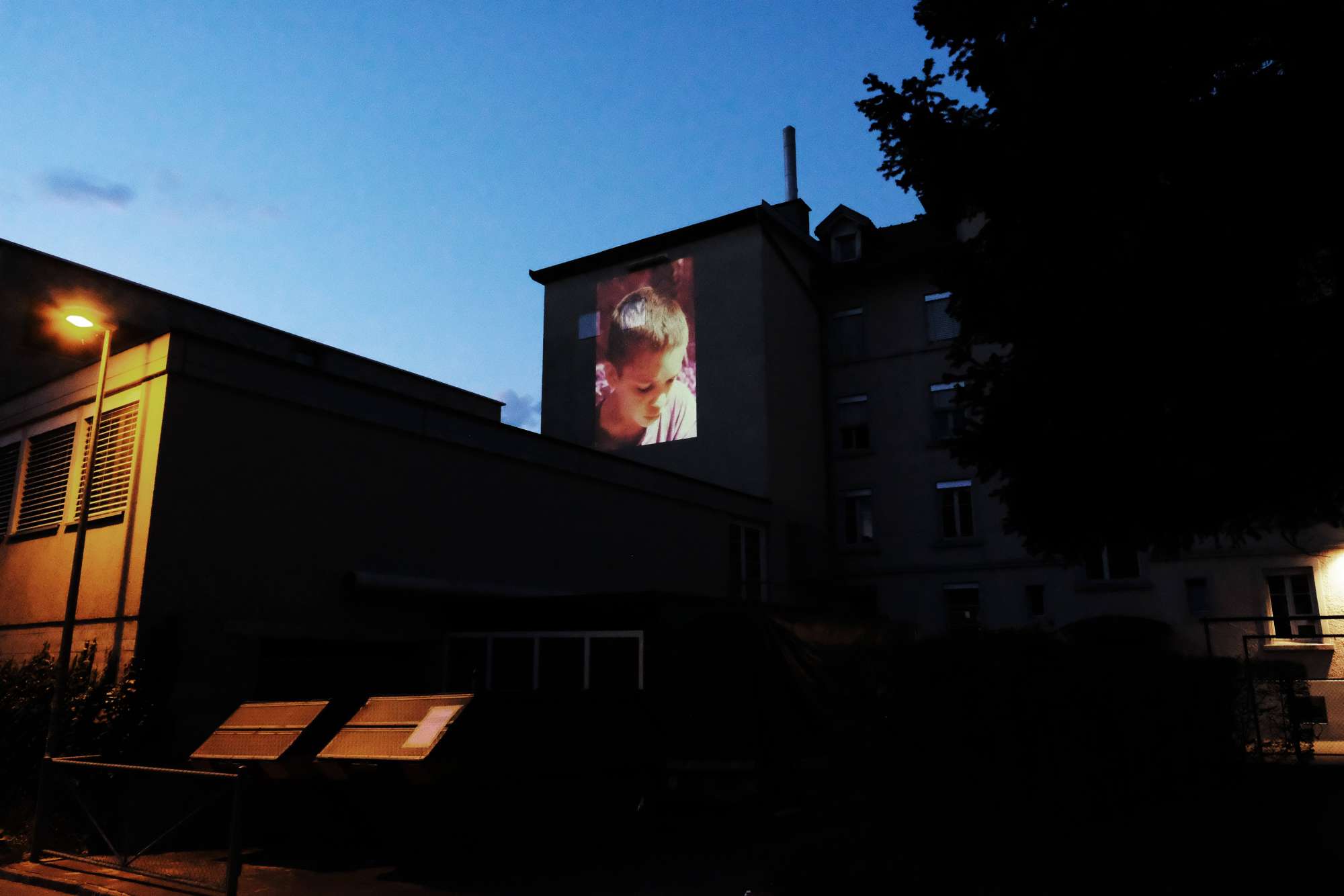
Simone Kappeler takes photographs of landscapes, her direct environment, and individuals from her surroundings based on emotional impressions. In her work for ‚stadtprojektionen,‘ monochrome photos of peacocks are combined with false-color portraits into a series. The former were shot in a park in Italy to which the artist frequently returns, while the latter show her sons. The work of the artist is characterized formally by often blurred and false-color photographs. She plays with the choice of film material and the camera and experiments with exposures as well as the analogue development process. She thus creates visual impressions of a different color and removed from reality, which radiate a quiet melancholy and an enigmatic quality. Her ten-part series will be projected on the façade of the window manufacturer Haller—with which Kappeler shares an opening of the gaze.
,Veilleurs d‘images‘, 2017, 13 min 30 sec
,The Fairest Heritage‘, 2016, 5 min 22 sec
,The Fairest Heritage‘, 2016, 5 min 22 sec
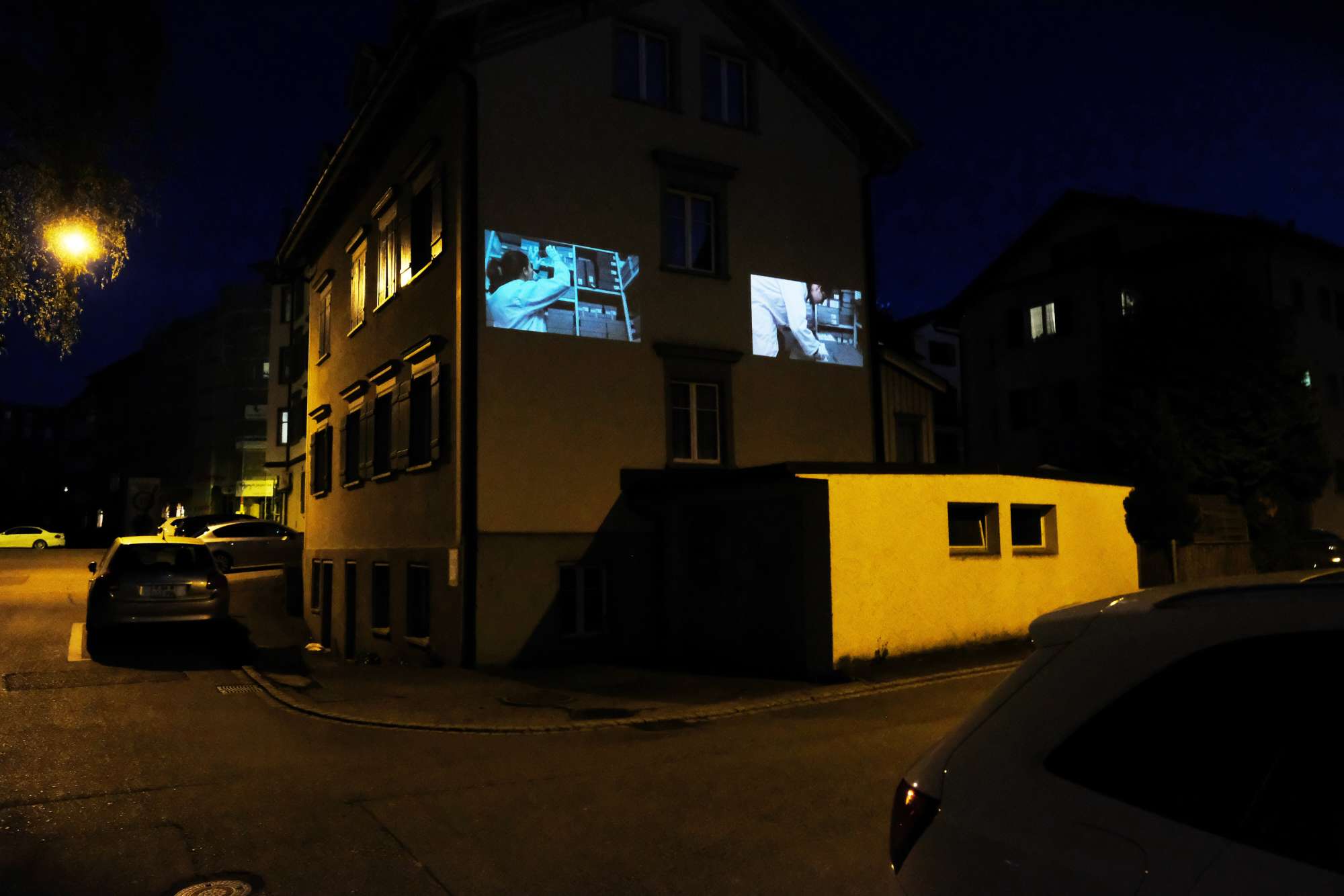
,Veilleurs d‘images‘, 2017, 13 min 30 sec
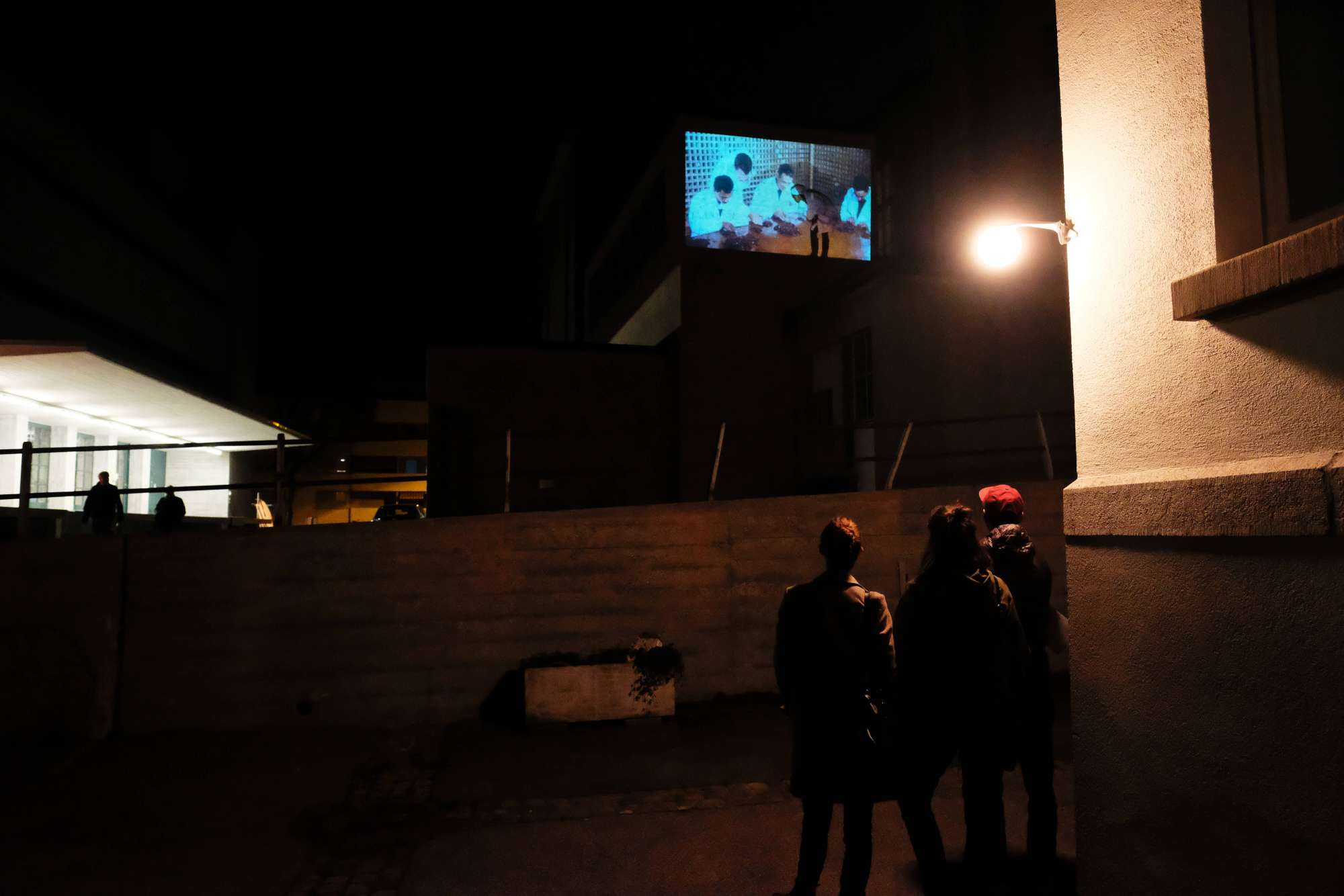
Uriel Orlow’s works often revolve around blind spots in history and memory. During ‚stadtprojektionen III,‘ it is possible to see two works by him:
‚Veilleurs d’images' shows a prisoner of a high-security prison in France digitizing a collection of stereoscopic glass negatives. The client is the MuCEM (Musée des civilisations de l'Europe et de la Méditerranée) in Marseille. Through working with travel photographs shot by a Mr. Kostioukovsky between 1904 and 1939, the prisoner gains insights into history as well as a view out into the world beyond the prison walls. ‚stadtprojektionen III’ projects Orlow’s work on a façade that is divided in the middle by a row of windows. The two-channel video work is thus given another window, one that links indoor and outdoor space with one another.

‚The Fairest Heritage‘ can be seen on the intricate industrial building of the former soap factory at Dürrenmattstrasse 24. Cape Town celebrated the fifty-year anniversary of the Kirstenbosch Botanical Garden in 1963 and documented its history on this occasion. Orlow came across the film material documenting the anniversary celebrations—which show solely white protagonists—apart from a few workers—in the cellar of the library of the botanical garden. In cooperation with the actor Lindiwe Matshikiza, Orlow confronted the found film material with its blind spots. Dürrenmattstrasse, which has first had this name since 2009, spans a content-related arc to the projection of ‚The Fairest Heritage‘: it was previously called Krugerstrasse, named after Paul Kruger, who was the president of the Republic of South Africa from 1882–1902. The renaming attests to the changing approach to dealing with colonial history.
,Land-Zunge‘, 2018
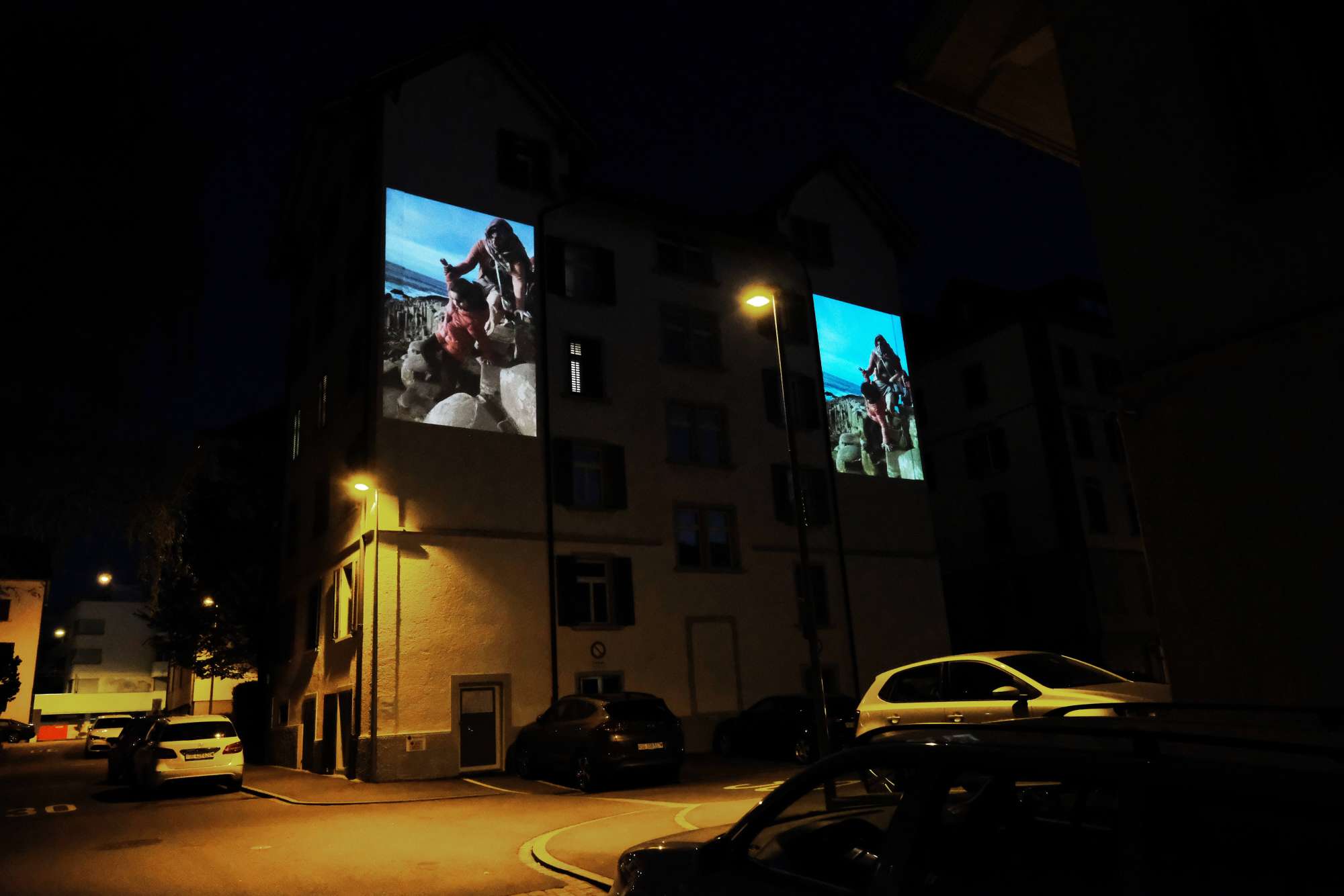
Daniela Keiser often deals in her work with the multidimensional nature and interpretation of pictures: examining photographs of and about cultures is indispensable to understanding things that we are still unfamiliar with by means of seeing. This thus facilitates encounters that open up new dimensions.
On the rear façade of Kamorstrasse 6, it is possible to see the work ‚Land-Zunge‘ (Tongue of Land): a woman is holding the right arm of a girl who seems to be helping her walk over stones. The same motif is taken up a second time with a slight shift in time. Formally, two diagonals bring tension into the picture: the blue of the horizon and the reddish color of the protagonists’ clothing. Keiser captured the image motif during a visit to the Giant’s Causeway, a UNESCO World Heritage Site. The formation of basalt columns is located on the northern coast of Ireland. The name Giant’s Causeway makes reference to an Irish legend, according to which a giant connected Ireland with Scotland by means of this causeway. The tourists depicted appear in gigantic dimensions on the rear façade of the residential building erected around 1900 and thus challenge one’s own seeing habits.
Text on tongues of land by Miriam Wiesel and Axel Schmidt, Berlin, 2018
,Living in a Painting‘, 2019, 14 min 11 sec
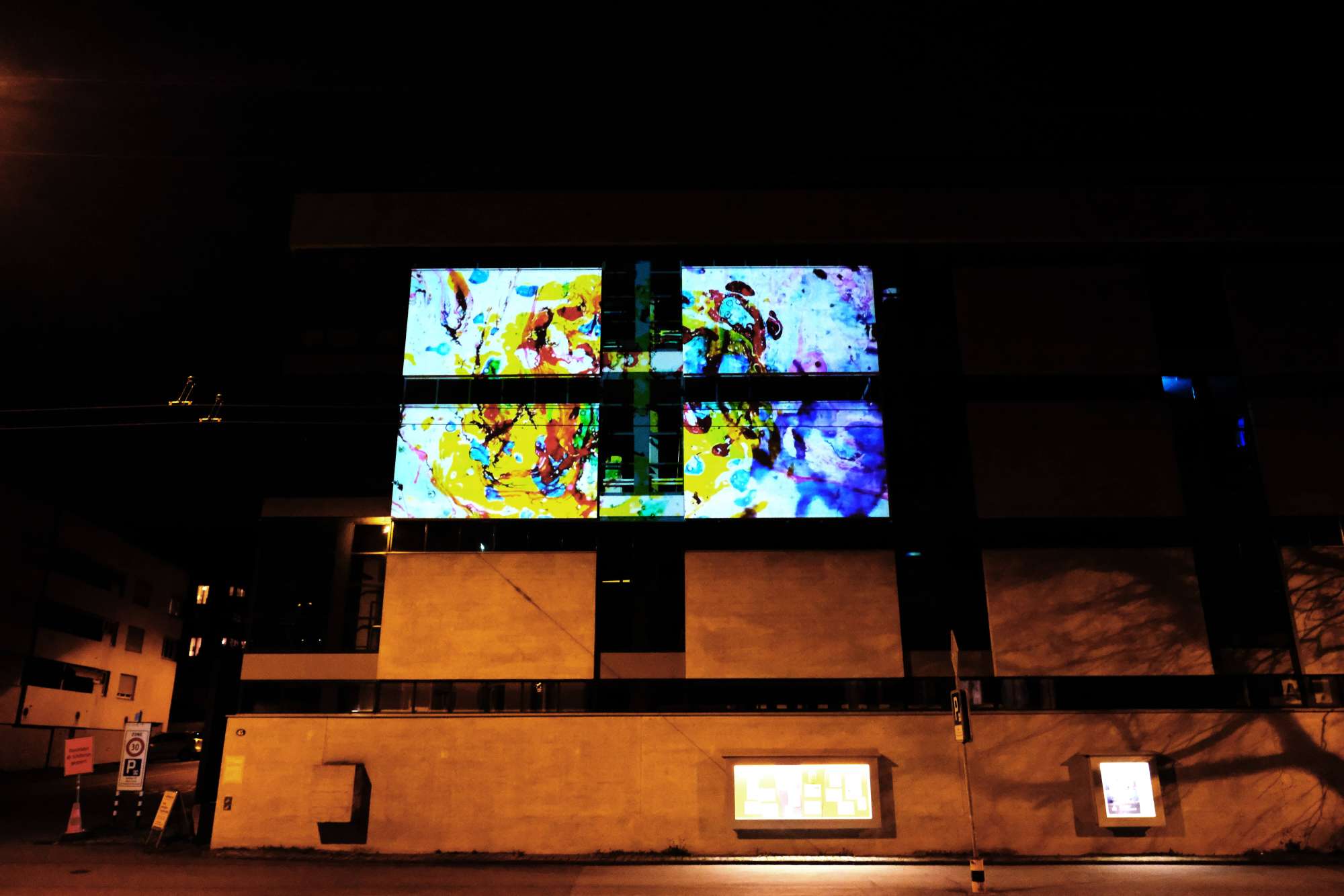
Maya Rochat works with the mediums of painting, photography, and film—and often does so in a performative and space-filling manner. Her own visual material is superimposed, distorted, and painted on. What thus arises is a colorful spectacle in which a fluid quality is inherent. Associations with water or soap suggest themselves. In her work for ‚stadtprojektionen,‘ the superimposing or layering of levels is central: The former warehouse of a soap factory, which was erected at the end of the 1950s, stands at Zürcherstrasse 45. It is distinguished by its many windows as well as suspended concrete surfaces. Rochat will project a transforming collage on four of them.
,Latent Space‘, 2017, 45 min
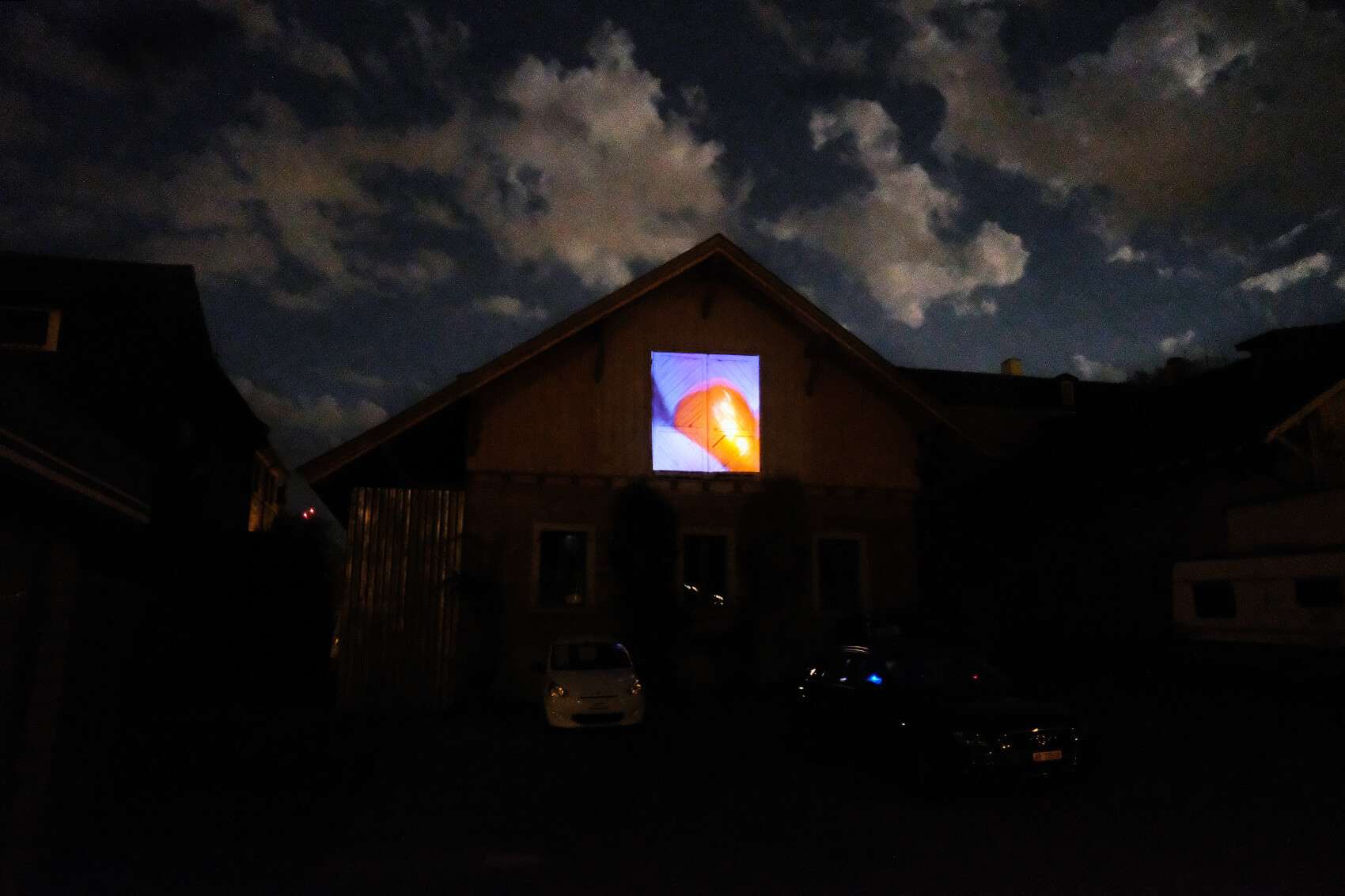
Artificial intelligence is an essential feature in the works of Jake Elwes—hence in ‚Latent Space’ as well. For it, Elwes created an algorithm trained based on human habits of seeing. The algorithm re-sorted 14.2 million photographs that Elwes extracted from the Internet again and again and thus constantly produced new pictures. From them he created a video that resembles an abstract form drawing more than clearly readable pictures. ‚Latent Space‘ is projected on the building of a former transport company: around 1900, the Louis company was responsible for hauling away all the waste from the entire city of St.Gallen and expanded its transport enterprise to include mail delivery as well. Following the deployment of the first trucks in 1927, all transport was switched to trucks in 1945. With ‚Latent Space‘, pictures from the latent web, a space that is concealed from us, are projected at a place steeped in history, one that already embraced innovative technologies at an early point in time.
,From...To...‘, 2008-2019
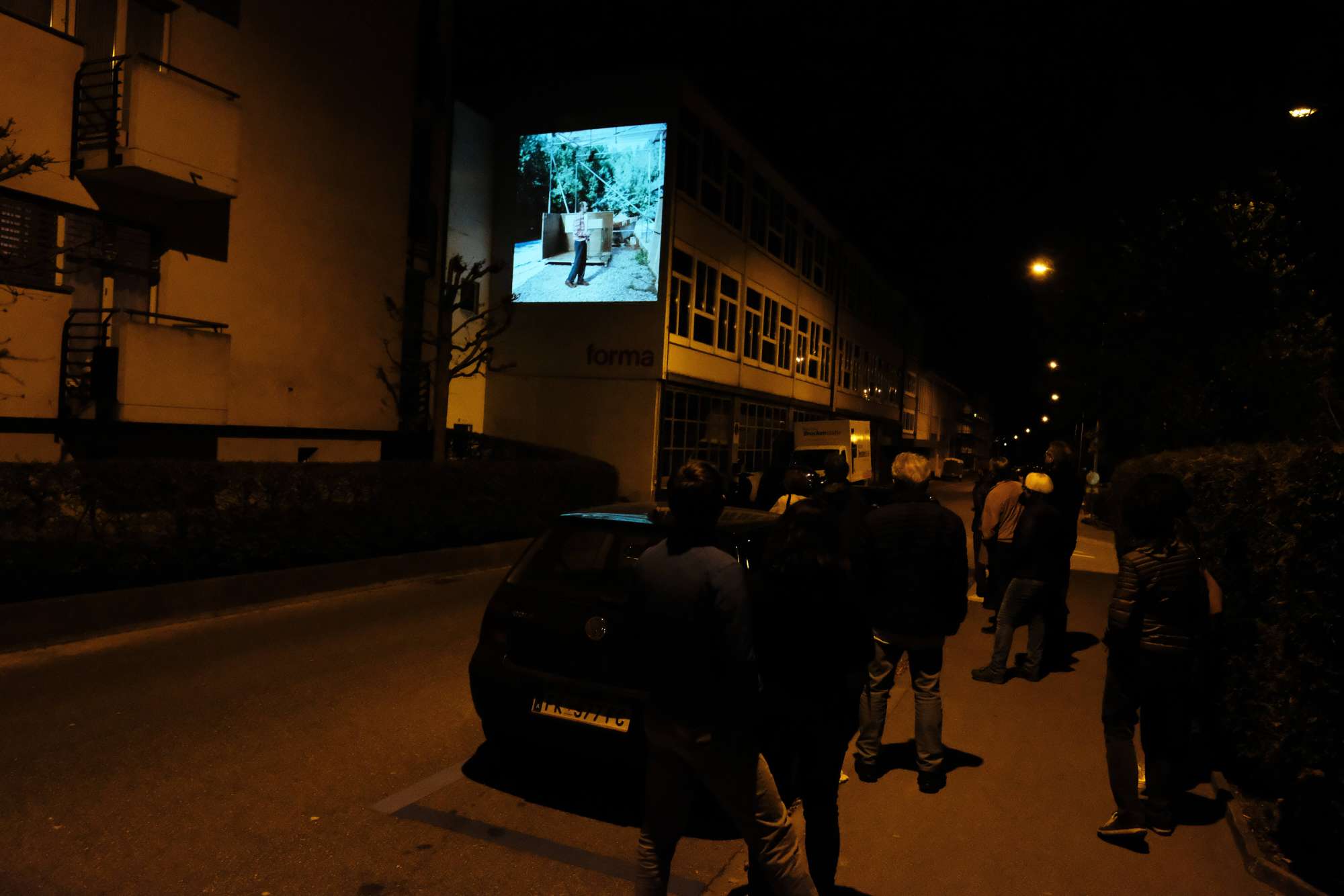
Jiří Makovec is a sophisticated observer of our era. He allows himself to drift, follows traces, to then in turn lose himself in them. Things he sees and things that occur guide his emotions and decisions; he captures the observations using film and photo cameras.
During ‚stadtprojektionen III,’ Makovec takes us along on a journey to various locations from his twenty-year-long creative period. Besides New York, China, Iceland, and other places, he returns again and again to St.Gallen, one of his sites of action. The artist focuses our perception on moments in everyday life that attest to the merging of life and art.
‚Frauen auf Bäumen‘ (Sammlung Jochen Raiß)
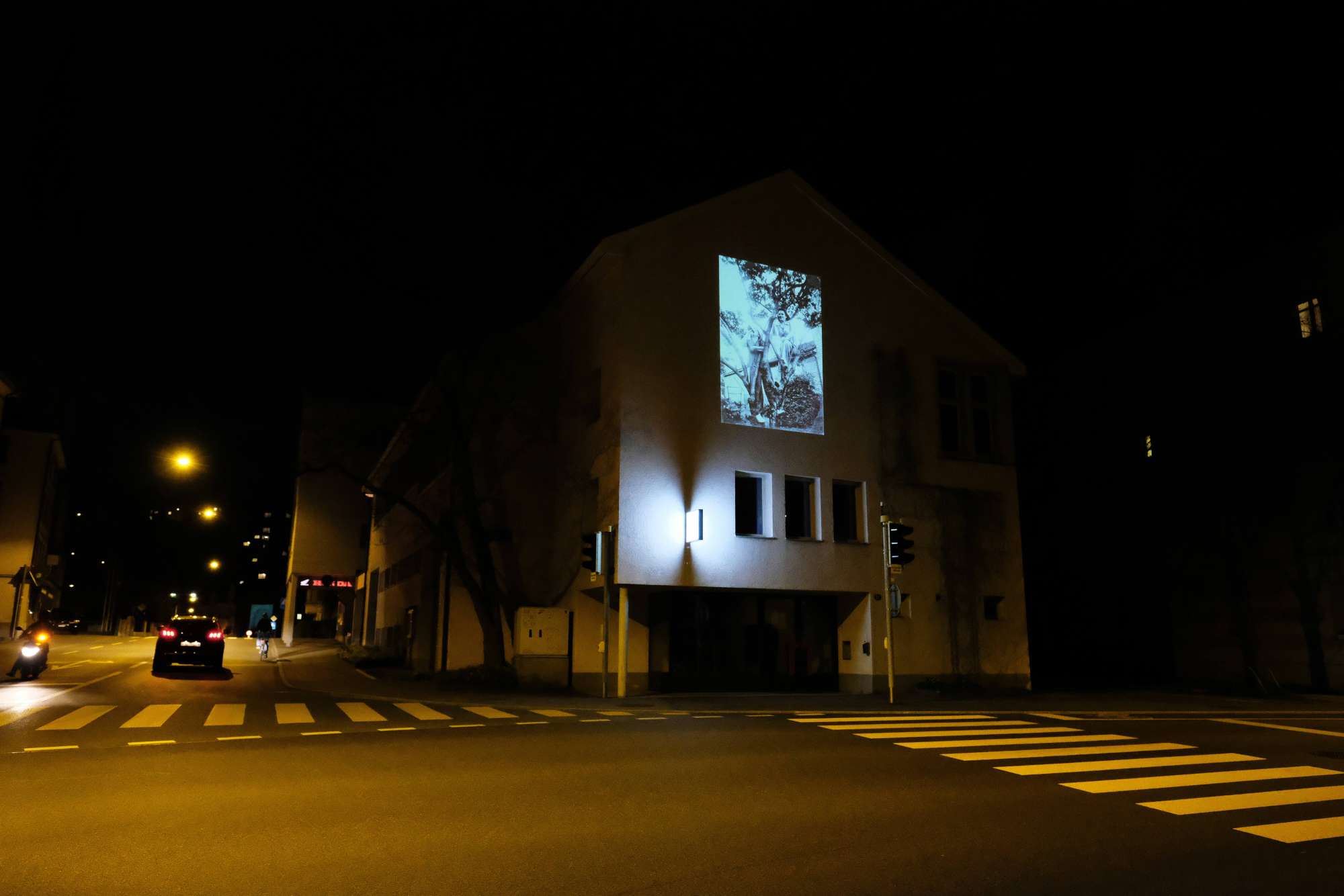
Surrounded by trees, photos of women in trees can be seen on an overgrown wall at Burgstrasse 61. In part heroine-like, in part self-conscious, they sit or stand on very diverse trees. The total of sixteen photographs is a selection from the collection of amateur photos belonging to the photo editor Jochen Raiß. He again and again came across the unusual motif by chance at flea markets over a period of more than twenty-five years and had the photos published in book form by Hatje Cantz in 2016. The anonymous photographs come from a private context and were created for the most part between the 1920s and 1950s. Some of them have an intimate quality, but do not make it possible to determine the type of relationship between the model and the person taking the photograph—the photos instead offer viewers space for their own interpretations. ‚stadtprojektionen III‘ now brings the photos created in the out-of-doors—and hence also the women—into the open air once again for a period of four evenings.
,when time‘, 2019, 6 min 3 sec
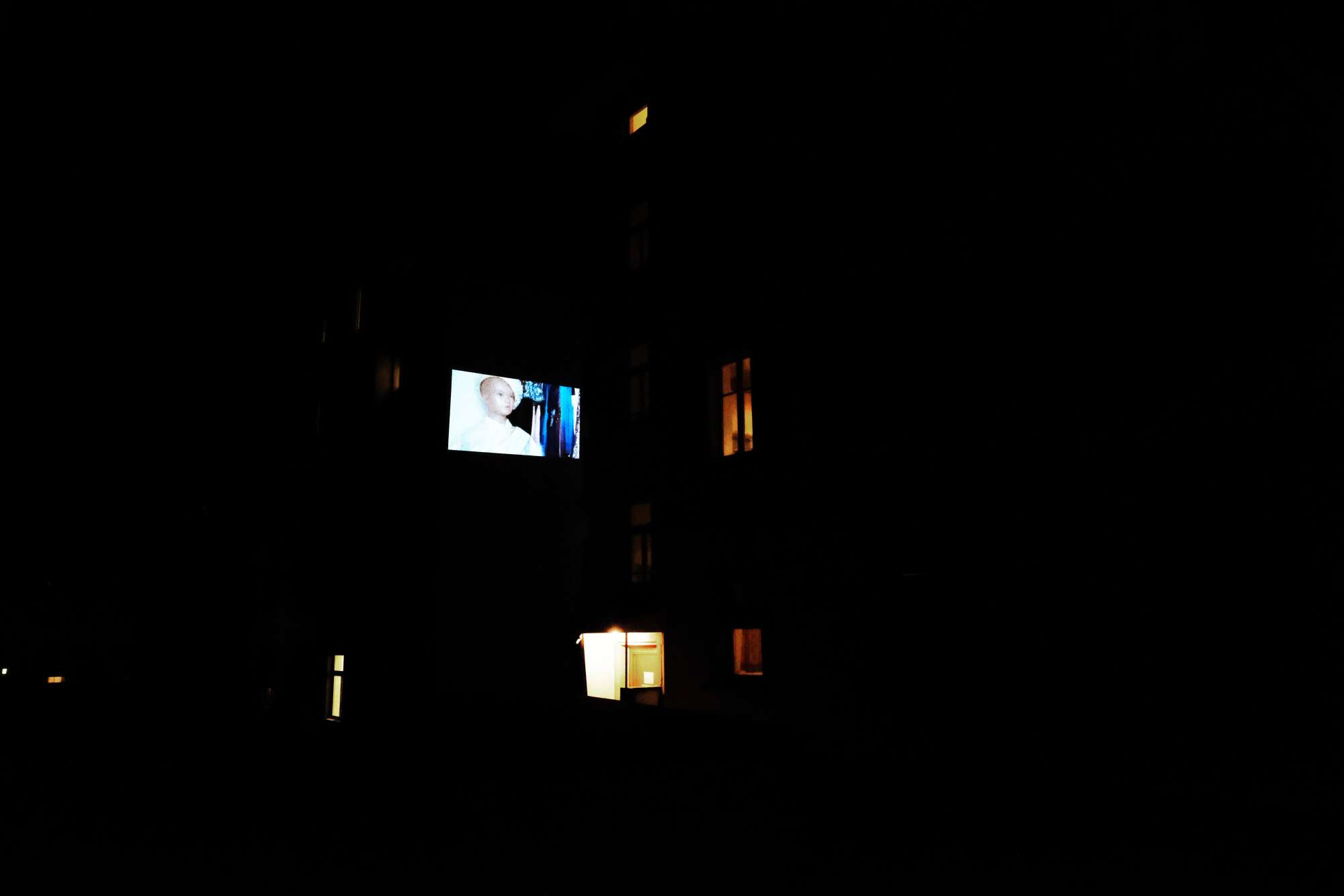
Hannah Weinberger’s artistic practice is strongly influenced by an interest in others—in individuals as well as in groups and how they form. She creates concentrated sound and video installations in which viewers can immerse and lose themselves. Weinberger juxtaposes them—visually and auditorily—with charged pictorial worlds and alternating tempos. The artist’s attention focuses on the heartbeat of locations; she searches for what pulsates, et al. in the movement of people. In her contribution to ‚stadtprojektionen III,‘ she has developed a site-specific work and sounded out the rhythms of St.Otmar and Lachen.
,There Are No Homosexuals In Iran‘, 2017
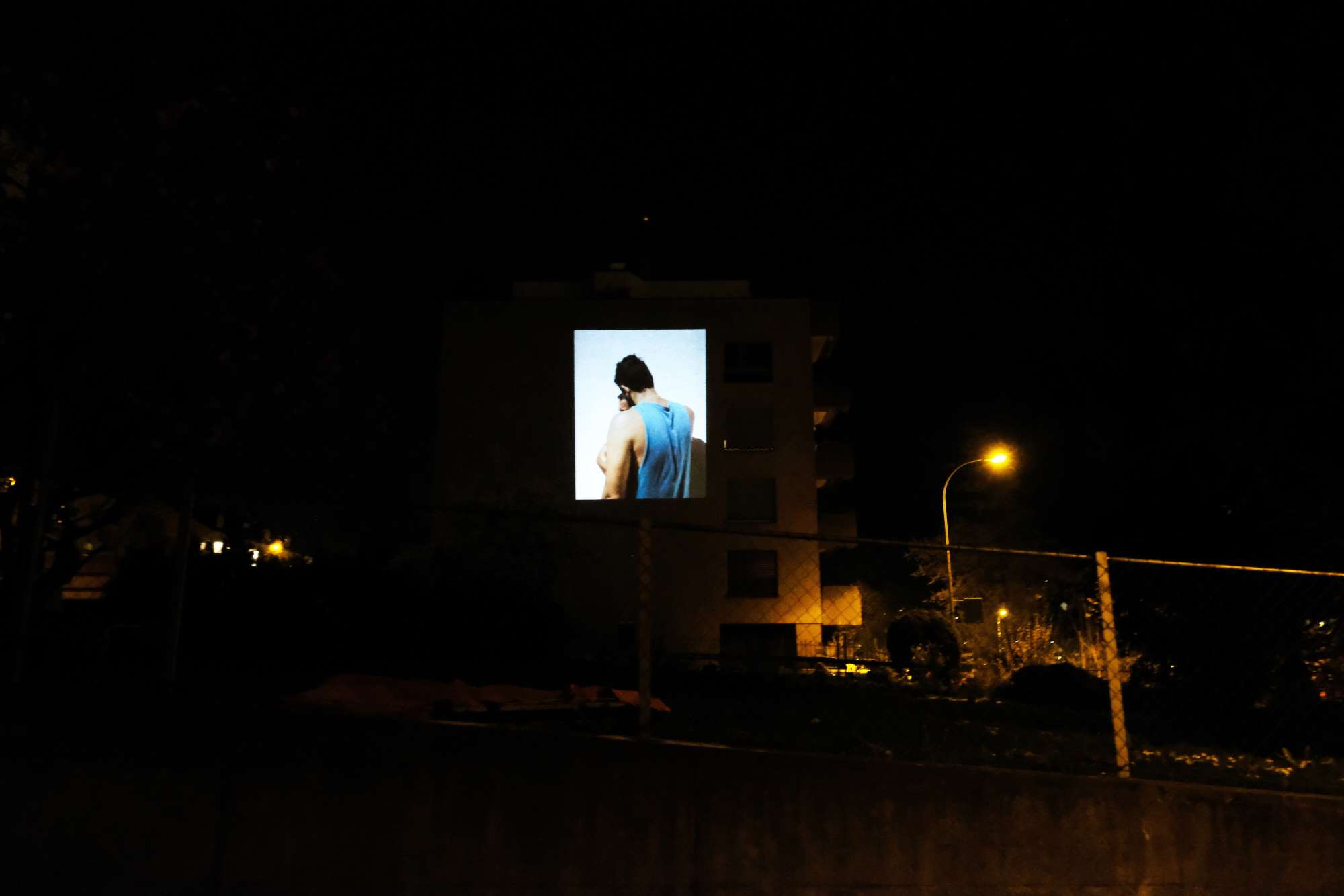
Laurence Rasti took portraits of Iranians refugees in the Turkish city of Denizli—in a refined play of concealing and revealing. Denizli is a transit zone to which homosexual Iranians flee and stay until they are hopefully admitted to a host country where they are allowed to freely live out their sexuality. Homosexuality is punished in Iran: ‚There are no homosexuals in Iran‘ is a homophobic claim that can be traced back to President Mahmoud Ahmadinejad. Staged using subtle lighting conditions as well as by incorporating refined elements such as fabric or flowers, Rasti does not conceal the seriousness of this topic. In her series, she focuses on the dignity and hope of the individuals.
In her photographic works, Rasti questions concepts such as identity, gender, and beauty. Parallel to the train tracks, exposed on the large side wall of Zschokkenstrasse 10, it will be possible to see a selection of photographs from her book published in 2017, ‚There Are No Homosexuals in Iran.'
,Persian Textures‘, 2019
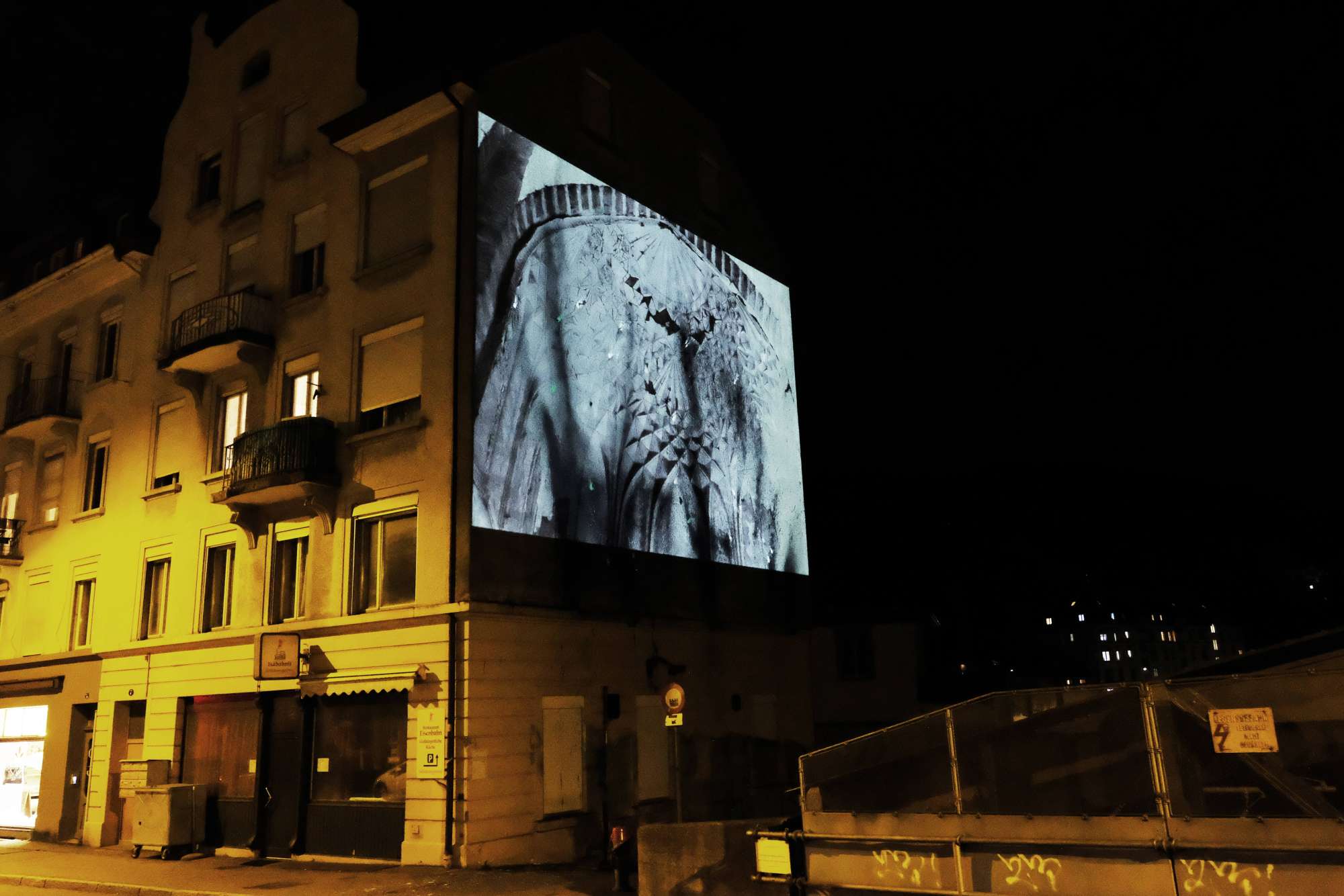
Cécile Hummel is a traveler who makes use of the mediums of photography and drawing. In her pictorial worlds, she teases poetic aspects out of everyday life—and, conversely, she makes the day-to-day goings-on near important monuments visible. In 2018 the artist was awarded an Atelier Mondial grant for a journey along the Silk Road, during which she spent an extended period in Iran. In the cities of Isfahan, Teheran, or Shiraz, she came across not only religious monuments with magnificent mosaics, but also areas under development and the hustle and bustle of urban shopping. A small change in perspective with a view of the same subject matter—for instance an exposed building, in the next picture along with its spatial context—make one aware of the fleetingness of found situations. Hummel’s photo series of Iran can be seen over the railroad tracks, on the firewall of Vonwilstrasse 7. The projection venue makes various tempos of reception possible: while traveling in a train or driving or walking over the Otmarbrücke (bridge).
,MfG Beni Bischof‘, 2019
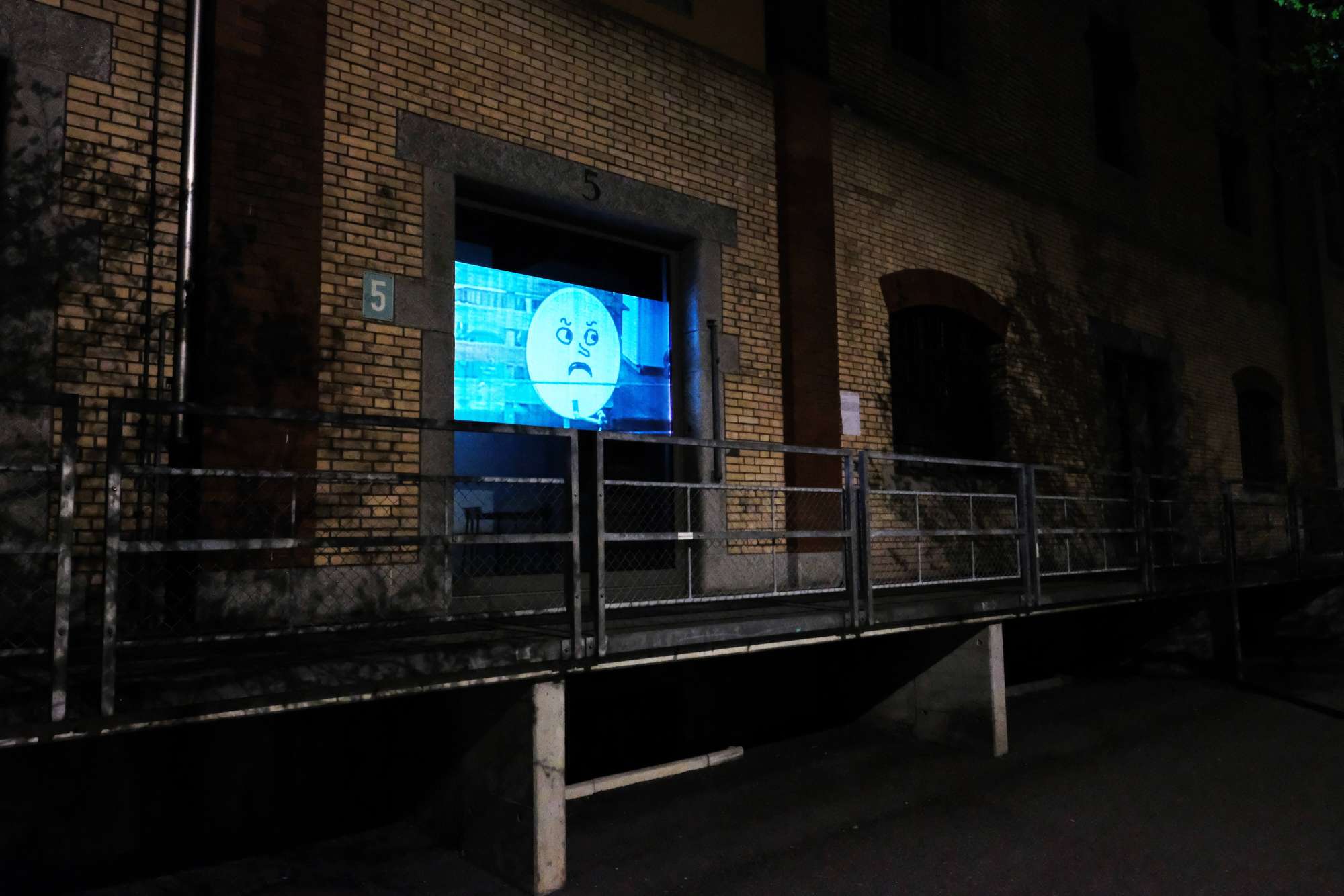
Beni Bischof has had his studio in the Lachen district, more specifically on Zürcher Strasse, for a number of years. On his day-to-day way from the studio to the Lachen bus station or the train station, he has thus already collected a number of things: parking tickets, Ritalin packaging, pizza boxes with half-eaten contents, Bushido graffiti, or the advertising messages of neighboring shops—‚von Mensch zu Mensch‘ (from person to person) or ‚Gorgonzola, Speck, Stängeli' (gorgonzola, bacon, breadsticks). For ‚stadtprojektionen,’ Bischof compressed his Lachen collection into a film: he zooms into photos in which doodles and comments appear, animates advertising slogans, or incorporates strolling fingers. The artist goes on a humorous and trashy romp through Lachen that already facilitates encounters with the district in the run-up to ‚stadtprojektionen’: his projection can be seen starting on April 8 (daily as of 6 p.m.) to the left of the entrance to the Kunst Halle Sankt Gallen (Davidstrasse 40).
We express our great gratitude to all the artists; to Sina Gerschwiler for the graphic design; to Jonas Huber for the website; to Amy Klement for the translation; to Stefan Indlekofer for the documantation; to Clemens Waibel and Bastian Lehner for the technical supervision; as well as to the videocompany, Johannes Rickli and Gianluca Trifilo for their support; to the Architektur Forum Ostschweiz and the Kunst Halle Sankt Gallen. We would also like to thank the city police, and all of the building owners and tenants.
The ANI association welcomes financial support for future ,stadtprojektionen‘:
Vereinskonto ANI – Verein für kuratorische Projekte
St.Galler Kantonalbank
IBAN CH88 0078 1623 1108 8200 0
Thank you!
The third edition of ,stadtprojektionen‘ is been generously supported by: